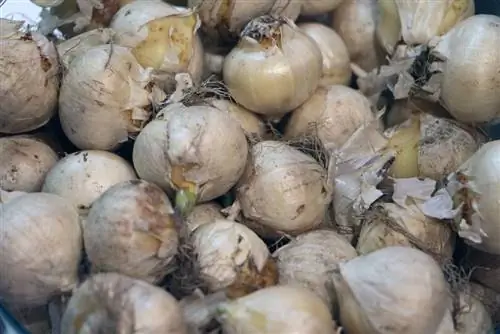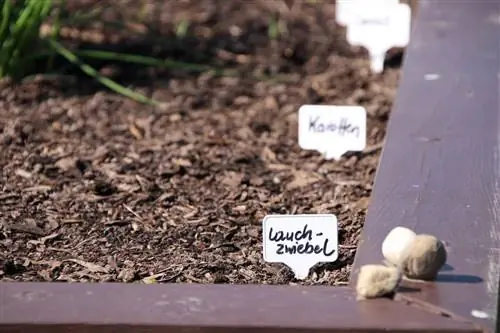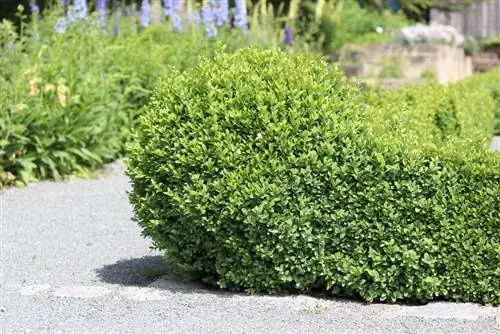- Author admin [email protected].
- Public 2023-12-17 03:39.
- Last modified 2025-01-24 12:45.
Onion plants bring a colorful sea of flowers to the garden. They are among the first colorful meadow flowers of the year and can also be admired in summer thanks to their majestic growth. Many of the bulbs are hardy, including early bloomers that are less sensitive to frost, such as crocuses, hyacinths and snowdrops. But noble summer flowers such as gladioli, imperial crowns and lilies also grow from bulbs. Since these are not hardy, they must be dug up to overwinter indoors. If treated properly, they stay he althy and can be put back in the ground next year to sprout again and bloom magnificently.
Why do flower bulbs have to come out of the ground?
Almost all gardening enthusiasts plant flower bulbs in groups in the ground. There are usually 5 to 10 bulbs together because the flowers that grow from them look particularly decorative. Especially when it comes to early-flowering bulbs, the prevailing opinion is that they can remain in the ground for several years. But in the second year, the flowers are usually poor and often only the leaves and stems appear on tulips. Moles, voles, long periods of rain and drought can be the reasons why not only the bulbs of summer flowering bulbs suffer if they are no longer cared for after they have been planted for the first time. Even wire baskets that protect against moles and mice are not a panacea, because these tools are powerless against unfavorable weather conditions that can damage the flower bulbs. In addition, clever mice grab the onions from above in the baskets if they are hungry and have no other choice.
Tools that make digging up bulbs easier
Special tools are available from garden supply retailers that can be used to dig up flower bulbs in such a way that they are not injured. However, if you work carefully, you can also use conventional garden shovels. The work is usually done very well with a digging fork. It allows the onions to be loosened before removal. If the bulbs were placed in special trays when they were first buried, which are also available from specialist retailers, they can be lifted out of the ground a little more easily at the end of the growth and flowering period.
Spring bloomers
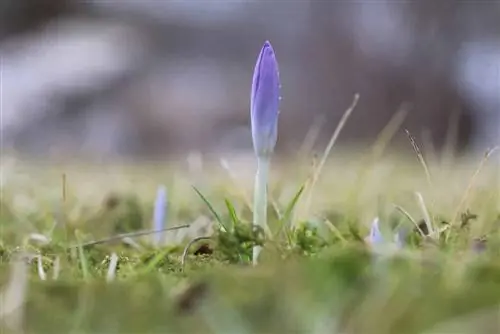
The spring flowering bulbs can be removed from the soil as soon as their flowers and leaves have dried out and can be easily pulled off. Then the onion is already ready for winter rest. If small offshoots are found next to the original bulb when digging up, these offshoots can also be stored indoors in the winter.
Storage
A dark, dry room is recommended as the ideal storage location for the flower bulbs. In damp cellars there is a risk that the onions will become moldy during storage. Before storage, the soil adhering to onions should be carefully and thoroughly removed. The quality of the onions can also be checked. Onions that are soft, mushy, moldy or dried out should be discarded. The spring flowering bulbs only need a suitable storage location from early summer to autumn. This should be cool and airy. A room temperature of 10 to 15 degrees is ideal.
How to proceed
- Buy onions in summer and plant them in the ground by late fall
- After the spring flowers have bloomed, cut off the flowers and let the leaves dry.
- If there is a risk that the bulbs will dry out or rot in the ground or be removed by mice and moles, dig up the tubers before summer
- then remove any soil residue from the bulbs and let it dry for a few days
- Store in a dry but not too dry condition in an airy and cool place until autumn
- Do not stack onions on top of each other in the stairs or in the storage area
- sort, label and store onions according to variety before storing
- Check onions every now and then for mold, pests and rot
- sort out damaged onions
- Replant undamaged onions in the fall
Summer bloomers
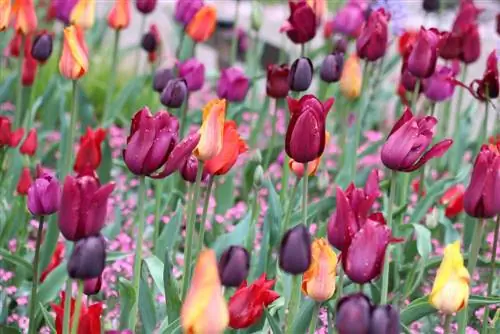
When it comes to the bulbs of summer bloomers such as gladiolus, royal crowns and dahlias, flower lovers have no choice but to remove them from the ground in good time if they can enjoy the elegant flowers of these plants again next year want. This work must be completed before the first onset of winter.
While the very first night frosts spare the bulbs of summer bloomers, they are damaged during longer periods of frost, become soft and rot the next spring. Before removing the flower bulbs, the flower stems must be shortened to a length of around 10 cm. the onions can be removed.
Storage
A dry, airy place is suitable for overwintering the bulbs of summer bloomers, such as a staircase or a wooden box with a floor lined with paper. Before storage, the onions should be roughly removed from any remaining soil. The bulbs need to be stored sorted to make gardening easier in the coming year. New daughter bulbs can be separated from the mother bulbs and also overwintered. However, the onions must not be injured under any circumstances, otherwise they are susceptible to rot and pathogens.
The storage room in which the summer flowering bulbs overwinter must be dark, cool, well ventilated and frost-free. Uniform humidity is important. The ideal storage temperatures are between plus 5 and 10 degrees.
Control
Due to the long storage time, the quality of the summer flowering bulbs should be checked regularly. They must not show any changes during the storage period. All onions that no longer look he althy must be sorted out, otherwise their diseases or rot can spread to he althy and intact onions. If pests are discovered, they must be combated.
Warehouse media
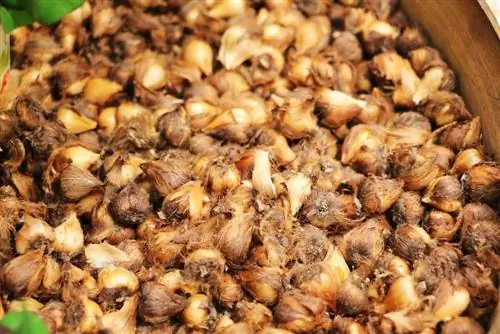
Dry sand, peat or dry newspaper are recommended as storage media for flower bulbs of summer bloomers that are intended to overwinter without damage. The individual bulbs can be completely wrapped in the sand, peat or paper without touching each other.
How to proceed
- Dig up summer flowering bulbs immediately after the first ground frost
- shorten the stems remaining on the bulbs to about 10 cm
- Use tools suitable for digging, such as garden shovels or digging forks
- Be careful when digging so as not to damage the bulbs
- Remove soil residue from onions and allow to dry if necessary
- sort out soft, rotten and moldy specimens
- Sort summer flowering bulbs and store them separately according to variety
- Store dark, cool and frost-free at plus 5 to 10 °C
- Protect onions from drying out with sand, paper or peat
- Put bulbs back in the garden in late spring after the Ice Saints are over

